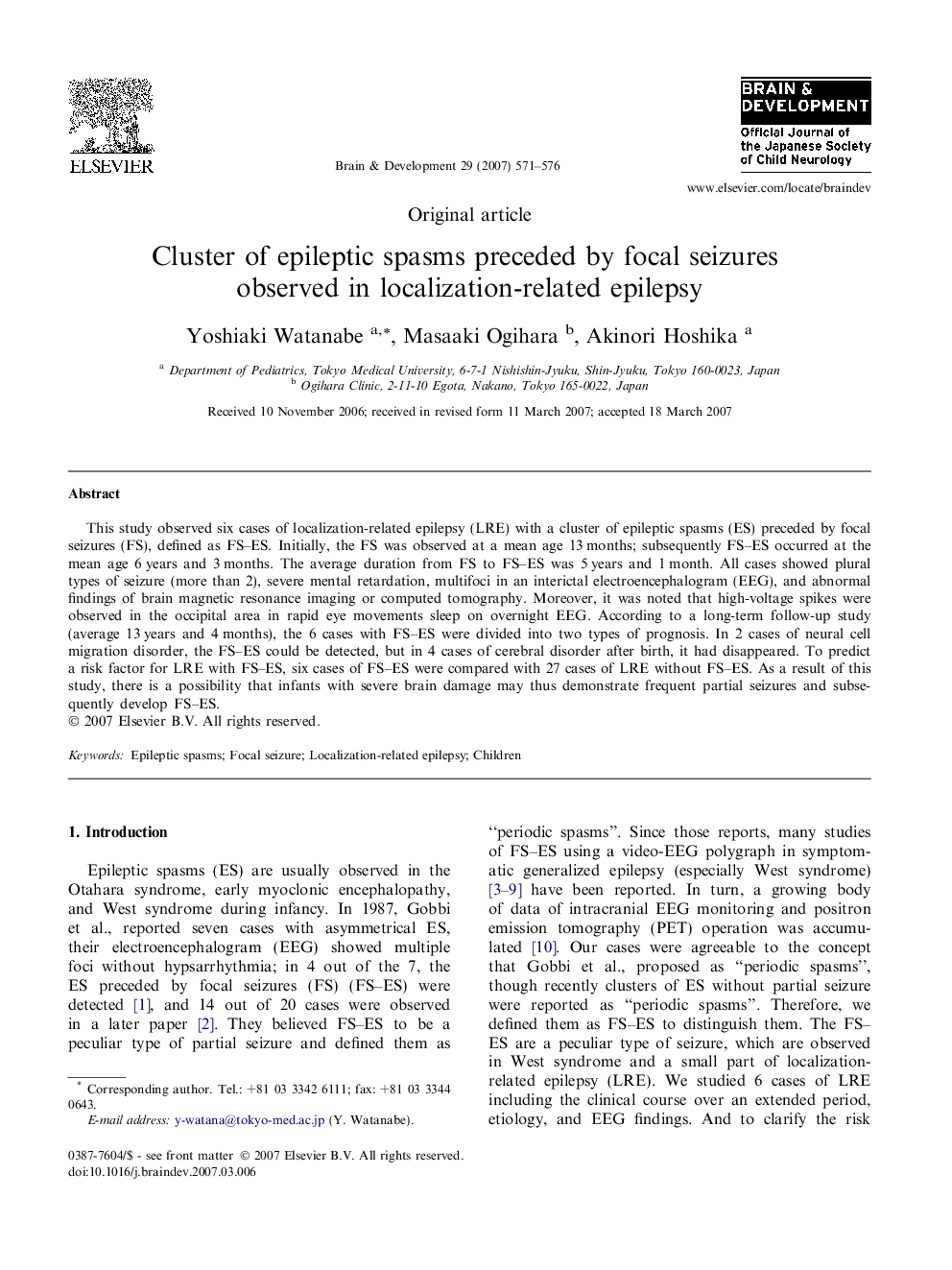| Article ID | Journal | Published Year | Pages | File Type |
|---|---|---|---|---|
| 3038532 | Brain and Development | 2007 | 6 Pages |
This study observed six cases of localization-related epilepsy (LRE) with a cluster of epileptic spasms (ES) preceded by focal seizures (FS), defined as FS–ES. Initially, the FS was observed at a mean age 13 months; subsequently FS–ES occurred at the mean age 6 years and 3 months. The average duration from FS to FS–ES was 5 years and 1 month. All cases showed plural types of seizure (more than 2), severe mental retardation, multifoci in an interictal electroencephalogram (EEG), and abnormal findings of brain magnetic resonance imaging or computed tomography. Moreover, it was noted that high-voltage spikes were observed in the occipital area in rapid eye movements sleep on overnight EEG. According to a long-term follow-up study (average 13 years and 4 months), the 6 cases with FS–ES were divided into two types of prognosis. In 2 cases of neural cell migration disorder, the FS–ES could be detected, but in 4 cases of cerebral disorder after birth, it had disappeared. To predict a risk factor for LRE with FS–ES, six cases of FS–ES were compared with 27 cases of LRE without FS–ES. As a result of this study, there is a possibility that infants with severe brain damage may thus demonstrate frequent partial seizures and subsequently develop FS–ES.
